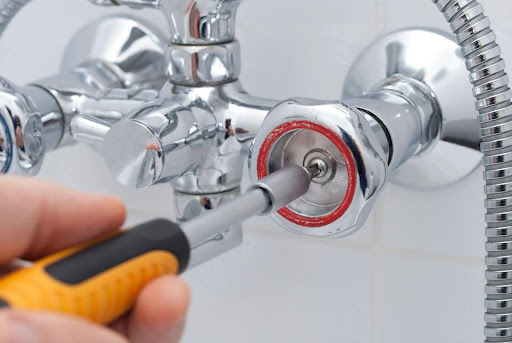Taking care of your home's plumbing system can't be overstated. Not only does it ensure the smooth functioning of daily activities, but it also helps avoid substantial repair costs down the track. Engaging in DIY plumbing repairs offers considerable benefits, primarily through cost savings and added convenience. With a few basic tools, homeowners can address common plumbing issues without always needing professional assistance. Essential tools include wrenches, pliers, a plumber's tape, and a plunger. Of course, safety comes first—understanding your limits and knowing when to call in a licensed plumber is crucial for more complex repairs.
Fixing a Leaky Faucet
Leaky faucets are one of the most common plumbing issues in homes. Repeated dripping not only wastes water but can also lead to increased water bills. Faucets come in different types, such as compression, cartridge, ball, and ceramic disk, and understanding these types helps identify potential leak causes. Usually, a leaking faucet is due to worn-out parts like washers, O-rings, or seals.
First, identify the type of faucet you're dealing with to tackle this issue. Start by turning off the water supply to the faucet and plugging the drain to avoid losing small parts. Next, carefully disassemble the faucet, using appropriate tools, and replace worn-out parts such as the washer or O-ring. When choosing replacement parts, it's ideal to shop locally, perhaps at plumbing supplies in Aspley, ensuring they fit accurately. Finally, reassemble the faucet, ensuring everything is tightened properly to avoid further leaks. Testing the faucet for leaks after reassembly ensures the repair is successful.
Unclogging a Drain
Drain clogs can occur in sinks, bathtubs, and showers due to hair, soap buildup, or food particles. Addressing these clogs promptly prevents further plumbing issues. Different methods can be used depending on the clog's severity. A plunger might suffice for light clogs, while more stubborn blockages may require a plumber's snake. Homemade solutions, such as baking soda and vinegar, can also prove effective for minor clogs.
Preventative strategies like installing drain guards and avoiding rinsing large particles down the drain can help minimise future clogs. However, if these methods do not resolve the issue or if multiple drains clog simultaneously, it may indicate a more significant problem requiring professional intervention.
Repairing a Running Toilet
A running toilet can waste several gallons of water per day, leading to higher utility bills. Common causes of running toilets include issues with the flapper, float settings, or flush valve. Diagnosing the problem often just requires a close inspection of the toilet tank components.
To fix a running toilet, first turn off the water supply and remove the tank lid. Then, check the flapper to ensure it’s sealing properly over the flush valve. If it’s worn or misaligned, replacing it could solve the problem. If the float is set too high, adjusting it may also be necessary. Additionally, checking the flush valve for any obvious debris or leaks is worthwhile.
Regular maintenance, such as cleaning away mineral deposits and ensuring smooth operation of the moving parts, can prevent these issues from recurring. If the toilet still runs after attempting these fixes, it might be time to ask for professional help.
Stopping Low Water Pressure Issues
Experiencing low water pressure can be frustrating. Potential causes include debris-filled fixtures, a malfunctioning pressure regulator, or municipal supply issues. Cleaning aerators and showerheads is a practical starting point and can often restore proper water flow.
To clean aerators, simply unscrew them from the faucet, soak them in a vinegar solution to dissolve any mineral buildup, and then rinse thoroughly before reattaching. Showerheads follow a similar procedure. If these cleanings don’t improve water pressure, inspecting the pressure regulator or consulting with local authorities about potential municipal issues is advised. In some cases, the problem might need professional attention to resolve fully.
Patching Up a Pipe Leak
Pipe leaks can cause severe damage if left unchecked. Differentiating between temporary and permanent solutions allows homeowners to address leaks quickly and effectively. Temporary fixes like pipe clamps or repair tape are useful for emergencies or small leaks.
To apply a pipe clamp, clean the affected area and then place and tighten the clamp over the leak. Repair tape works similarly by wrapping the leaking section tightly. For a more permanent fix, soldering copper pipes or utilising a pipe repair kit may be needed. This involves more complex procedures and might be best left to professionals unless you're confident in your skills.
Regularly checking for signs of wear or corrosion on pipes helps prevent unexpected leaks. Catching potential issues early can save considerable time and money in the long run.
Conclusion
Learning basic plumbing repairs is both easy and rewarding. DIY fixes not only reduce costs but also provide a sense of accomplishment. Regular maintenance, like checking for leaks and clearing drain obstructions, is essential to keeping your home's plumbing in top condition. While many repairs can be managed with a bit of patience and the right tools, it's equally important to recognise when a professional's expertise is necessary. After all, some situations demand more than a quick fix. Need supplies? Check out Wynnum’s top plumbing stores. Embrace the balance of DIY plumbing, but with the wisdom to seek help when needed.






































